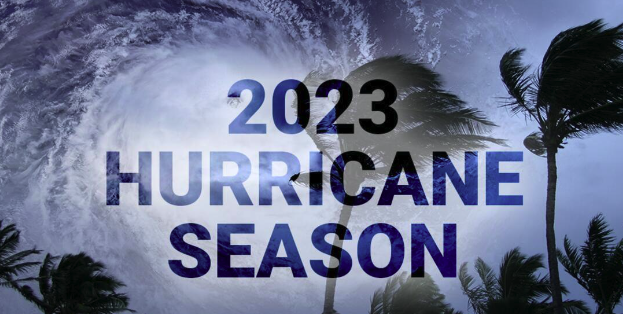Below-Average Hurricane Season Predicted by Forecast

Hurricane Season Could Be Below Average, Per Forecast
Early predictions indicate that 2023 may finally provide some relief from the punishing and destructive hurricane seasons that have plagued the region for the past two years.
A below-average hurricane season is predicted by Colorado State University’s pre-season projection, which was released on Thursday. This is due to the emergence of the meteorological phenomena known as El Nio, which reduces storm activity in the Atlantic, according to a recent article in the Florida Realtors by Alex Harris.
According to CSU, there will be 13 named storms this season, six of which will develop into hurricanes, and two will develop into significant hurricanes, or hurricanes with a category 3 or higher. An average season has seven hurricanes, three major hurricanes, and 14 named storms.
The Atlantic hurricane season lasts from June 1 to November 30 with a peak in August and September. But making predictions this early in the season is risky. The official season forecast from the National Oceanic and Atmospheric Administration, considered the gold standard, is released in late May.
However, early season forecasts are frequently made by academic publications and for-profit weather firms, and CSU’s is among the best. Its most recent forecast is very consistent with those of several other organizations, including the renowned European Centre for Medium-Range Weather Forecasts, or Euro.
“There is a pattern to hurricane seasons. There are indicators in the atmosphere that can alert us, according to Phil Klotzbach, a CSU meteorologist and the forecast’s primary author. This time of year, those hints really seem to show themselves.
However, Klotzbach cautioned, forecasts get more precise as the season’s high point approaches.
Between April and August, when the season really picks up, a lot can happen, he noted.
El Nio, or nothing at all?
This hurricane season is predicted by some early-season forecasts to have normal or below-average storm activity, but much will depend on whether or not an El Nio will develop this year. El Nio is the name given to a global meteorological phenomenon that causes the Pacific Ocean’s waters to warm and the Atlantic Ocean’s upper-level winds to change. This typically results in a colder, wetter winter in the East Coast and makes it more difficult for tropical storms to develop.
“That wind shear has somewhat of a protective effect on Florida,” said Ryan Truchelut, chief meteorologist of the for-profit weather service Weather Tiger, which also forecasts a normal or below-average season.
The Atlantic has seen a La Nia, a weather phenomenon at the other end of the weather spectrum, for the past three years. Unlike El Nio, La Nias are often characterized by increased storm activity in the Atlantic and decreased storm activity in the Pacific.
The amount of storms that form is significantly impacted by these weather patterns. According to Truchelut, the average number of hurricanes that make landfall in Florida during La Nia seasons since 1900 is 0.8, as opposed to 0.4 during El Nio seasons.
Meteorologists disagree on whether an El Nio will develop this year (and when), or whether the season will remain evenly balanced between the two extremes, or ENSO neutral.
According to NOAA’s most recent forecast, there is an 82% chance that one will form between August and October.
“Both of those directions are viable. Also possible, according to Truchelut, is that we experience no El Nio at all. El Nio and La Nia prophecies must always be treated with a large grain of salt in the spring.
And despite the fact that Florida needs a tranquil season—the state has been battered by storms—even if an El Nio develops, it is not a guarantee. Toward the end of the season in 2018, an El Nio developed, which slowed down all storm activity. But not before Hurricane Michael, a Category 5 storm, was able to develop and make landfall in the Panhandle during a brief window of ideal storm conditions.
“I don’t want people to conclude that they are not required to be ready for hurricane season as a result of this. There is a good likelihood that Florida will have a landfalling storm, even in an El Nio year, according to Truchelut.
“It reduces the chances, but we live in the most hurricane-prone region in the US, so it’s a given. We will always be exposed to that risk.
